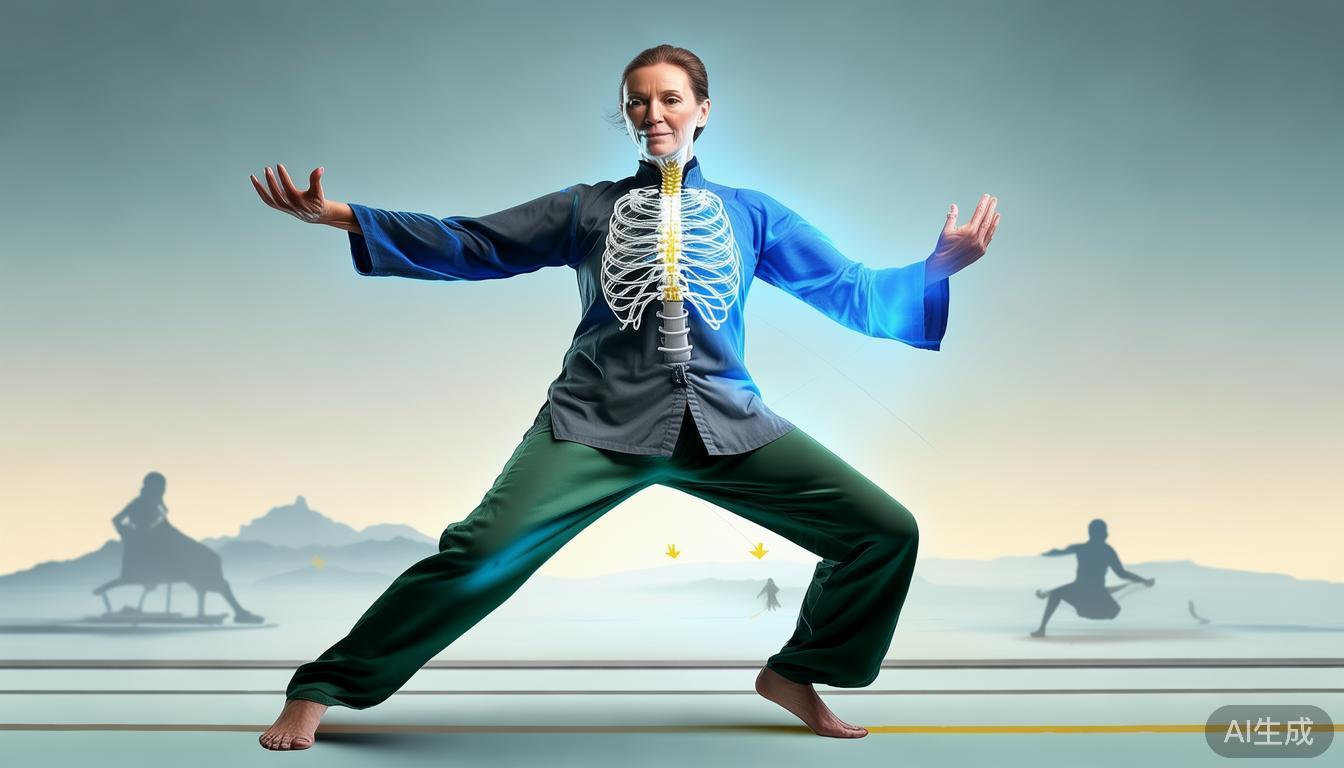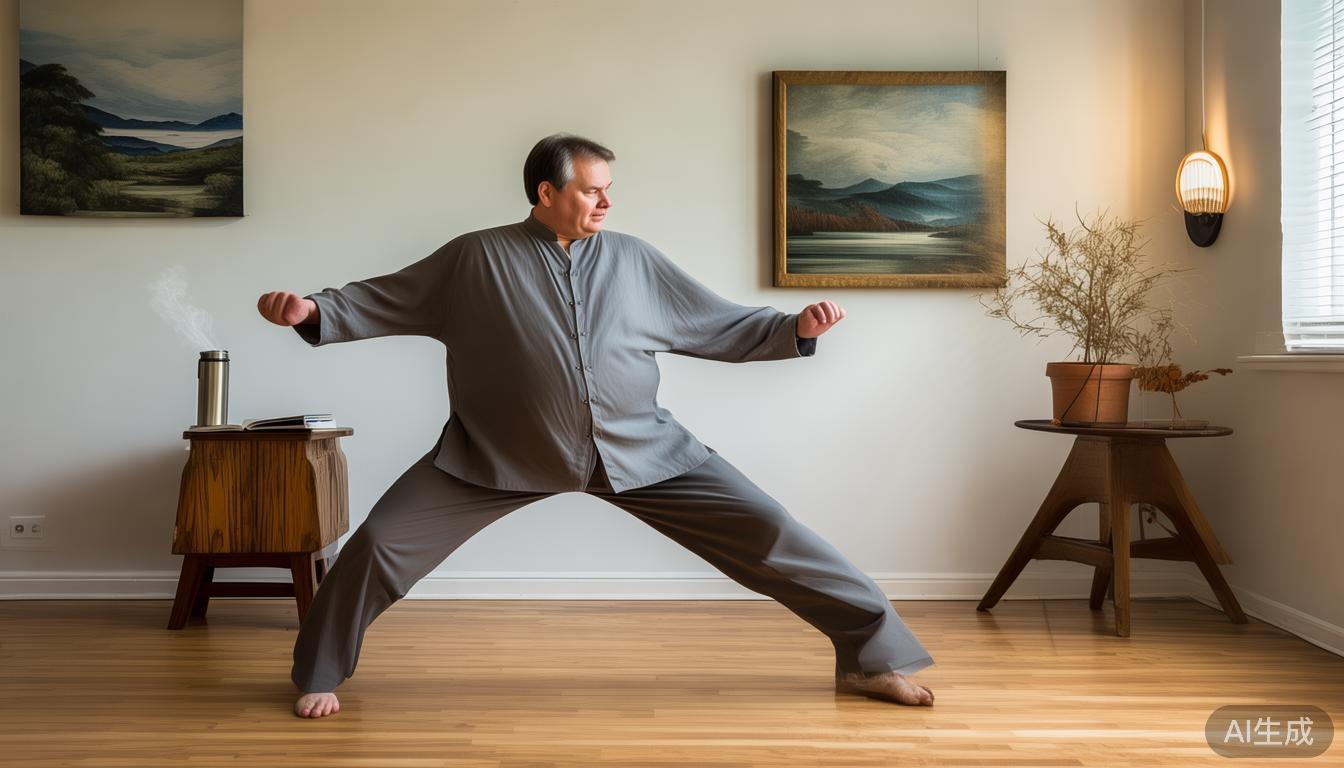After practicing Tai Chi for many years, I have come to realize that this sport is more than just a morning practice in the park. It integrates philosophical thoughts and physical practice, and its slow and swaying movements hide the power to resist the erosion of time. Especially for those who have entered middle age, Tai Chi is like a spring that can continuously gush out vitality, allowing us to find the fulcrum of physical and mental balance in the hectic and complicated life.
How Tai Chi improves sleep quality in middle-aged people
When we are tossing and turning in bed late at night and unable to fall asleep, not only are our bodies tired, but our minds are particularly restless. Tai Chi has corresponding breathing exercises, which can regulate the autonomic nervous system and slowly calm the overly active sympathetic nerves. Among the students I once taught, there was an accountant who had suffered from insomnia for a long time. After practicing for three months, he finally no longer relied on sleeping pills. He said that as long as he lies down, he can enter a deep sleep state within ten minutes. When he wakes up in the morning, the long-lost refreshing feeling returns to his body.
Practicing abdominal breathing can drive the movement of the diaphragm, perform internal massage, and promote the natural secretion of melatonin. Unlike strenuous exercise, which can cause short-term fatigue, Tai Chi restores sleep rhythms by balancing endocrine. Many students have reported that they are more active Tai Chi And Diabetes Courses Online when they fall asleep, and wake up in the middle of the night is significantly reduced, and their work performance during the day is improved.
How Tai Chi can enhance bone density in middle-aged people

Bones are like the supporting structure of the body, and they become fragile as we age. The shift of the center of gravity when moving in Tai Chi causes the lower limbs to always bear moderate pressure. This load can stimulate the activity of osteoblasts. Tai Chi Lessons . When I was young, I suffered a compression fracture in my lumbar spine due to a traffic accident. The doctor predicted that I would have to rely on crutches after the age of fifty. However, with the help of systematic practice, now that I am over fifty, I can still easily complete the independent movements of one leg.
Recent research shows that practicing Tai Chi three times a week can increase bone density by 0.5-1% per year. This number may seem small, but it can have a big impact on preventing osteoporotic fractures. What are the effects of osteoporotic fractures? Especially for postmenopausal female students, the rate of bone loss can be effectively slowed down through practice. Such a fundamental solution is better than calcium supplementation alone.
How Tai Chi can regulate the psychological stress of middle-aged people
The pressure of modern life is like an invisible shackle, especially for middle-aged people who shoulder the dual responsibilities of family and career. In Tai Chi, it pays attention to the focused training of "keeping the mind in the Dantian", which is equivalent to regular cleaning of the brain. During my teaching, I often guide students to imagine that they can expel their worries out of the body as they exhale. Such a simple imagery exercise can relieve anxiety very quickly.
A student working at a financial company told me that when an emergency project arises, he does simplified Tai Chi in the lounge. Ten minutes of practice can return the heartbeat to normal and lead to clear thinking. This instant adjustment ability is more effective and lasting than any refreshing drink. Many students have learned the life wisdom of "conquering strength with softness" through physical practice, and are more calm in the face of difficulties.

Which physical conditions is suitable for middle-aged people with whom Tai Chi is suitable?
A common misunderstanding is that some people think that Tai Chi is only suitable for people with healthy bodies. However, in fact, it is a rehabilitation exercise specially designed for people with weak bodies. I have coached 42 tai chi , a student who had undergone knee replacement before. After some adjustments to the frame and range of motion, they also obtained the benefits of exercise. Some practitioners suffer from high blood pressure, and after six months, the dosage of medication is generally reduced. This is an unexpected and gratifying result brought about by exercise.
For cervical spine problems caused by sitting at the desk for a long time, the special method of "virtual collar support" in Tai Chi can restore the normal curve of the spine. However, patients with severe heart disease need to be under the full supervision of a doctor before starting the procedure. People with osteoporosis should avoid excessive knee bending. It is recommended that people who are new to Tai Chi seek out a professional coach for an evaluation and customize an exercise plan that suits their actual conditions.
When you are practicing Tai Chi, have you noticed the unexpected joy it brings to you? Welcome to tell us your special experience in the comment area. If you feel that the experience is beneficial to you, please like it so that more people can see this health wisdom that has been passed down for thousands of years.


